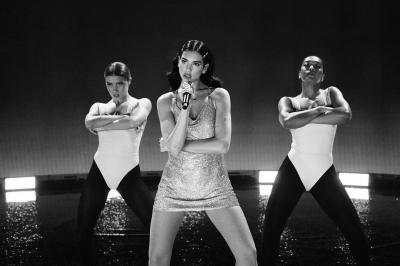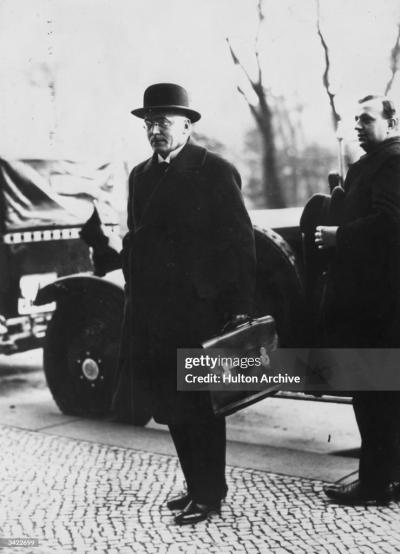Editorial licensing is a crucial concept for those looking to use images within the context of news, education, and other non-commercial applications. Getty Images provides a clear structure for licensing their content, particularly distinguishing between editorial and commercial uses. Understanding these nuances can help users make informed decisions when selecting and utilizing visual content.
What is Editorial Licensing

Editorial licensing refers to the use of images in a manner that is strictly for journalistic or educational purposes. This type of licensing is generally intended for contexts such as news articles, blogs, educational content, and any platform where the content is presented to inform, educate, or provide commentary without the intention of promoting a product, service, or brand. Images licensed under editorial terms typically cannot be altered and may include content that is sensitive or has specific rights associated with it.
Differences Between Editorial and Commercial Licensing

The primary distinction between editorial and commercial licensing lies in the intended use of the images. Below are key differences between the two:
- Purpose: Editorial licensing is for newsworthy or informative content, while commercial licensing is aimed at promoting products or services to generate revenue.
- Modification: Editorial images often cannot be modified, while commercial images can be altered to fit marketing needs.
- Context: Editorial images can include recognizable people and locations in a candid manner, while commercial licensing requires model and property releases for such content.
- Availability: Not all images are available for both editorial and commercial licensing; availability might vary based on restrictions set by the content creator.
Understanding these differences is essential for anyone looking to use images from Getty Images appropriately, ensuring compliance with licensing agreements and legal requirements.
How to Use Getty Images for Editorial Purposes
Using Getty Images for editorial purposes is a straightforward process, but there are some crucial guidelines to keep in mind. Editorial use refers to images that can be used for news, education, or commentary, but not for commercial purposes. Here’s how to navigate this effectively:
- Selecting the Right Image: Start by searching through Getty Images‘ extensive library. Use filters to narrow your results to “Editorial Use Only” images. This ensures you’re looking at the right content for your needs.
- Understanding Rights: Pay attention to the licensing agreements. Editorial images often come with restrictions regarding modifications, usage duration, and distribution.
- Attributing Correctly: Always include the appropriate credits for the images. This usually means crediting both Getty Images and the photographer, which provides transparency and respects copyright laws.
- Compliance with Usage Guidelines: Make sure your use of the image complies with Getty’s terms. For instance, using an editorial image in a way that suggests it endorses a product could breach these terms.
- Download and Usage: Once you’ve selected your images and confirmed the usage rights, you can download the files. Ensure you keep track of the licenses for your records.
Following these guidelines will help you make the most of Getty Images for your editorial content, maintaining both legal compliance and professional integrity.
Benefits of Using Editorial Images from Getty
When it comes to sourcing editorial images, Getty Images stands out as a premier choice for many reasons. Here are some benefits that make Getty a go-to destination for visual content:
- Extensive Library: Getty Images boasts a vast collection of images covering an array of topics, from current events to historical moments. This diversity allows you to find the perfect image for your project.
- High-Quality Content: The images are captured by professional photographers and vetted for quality. When you use Getty’s images, you can be assured of their visual impact and clarity.
- Timely Availability: Getty often updates its library with the latest news events and trending topics. This means you can find relevant content to enhance your editorial pieces.
- Credibility: Using recognizable images from Getty lends your work more credibility. It demonstrates professionalism and gives readers confidence in the information provided.
- Easy Licensing Process: Getty makes the licensing process straightforward and user-friendly, allowing you to quickly secure the rights you need without complicated legal jargon.
By utilizing Getty Images for your editorial needs, you not only enhance your content visually but also align with a reputable source that prioritizes quality and integrity.
Common Misconceptions about Editorial Licensing
When it comes to editorial licensing, there are quite a few misconceptions that can lead to confusion. Let’s clear up some of these myths!
Myth 1: Editorial Images Can Be Used for Commercial Purposes
Many people mistakenly believe that editorial images can be used in advertising or promotional materials. However, editorial content is strictly meant for newsworthy contexts, such as articles or blogs. Using these images for commercial benefit could violate copyright laws.
Myth 2: All Images Tagged as Editorial are the Same
Not all editorial images are created equal. Some may carry stricter licensing rules, while others may be less restrictive. Always check the licensing terms associated with each image to avoid potential legal issues.
Myth 3: Editorial Licensing is the Same Across All Platforms
Each platform has its own rules regarding how editorial content is licensed. What might be acceptable on Getty Images could differ significantly from what one finds on another stock photography website. It’s crucial to read the specific terms on the site where you’re sourcing images.
Myth 4: All Editorial Images Require Model or Property Releases
Another misconception is the assumption that every editorial image needs a model or property release. While model releases are common for commercial imagery, many editorial images do not require them, especially if they’re taken in public settings. Just ensure to review the specific requirements for each image.
Understanding these misconceptions helps clarify the intricate world of editorial licensing. Always make informed choices to avoid pitfalls and to utilize images responsibly!
How to Search for Editorial Content on Getty Images
Searching for editorial content on Getty Images is straightforward, but there are some tips and tricks that can make the process even easier. Here’s how to find what you need effectively:
1. Use the Search Bar
Start by typing relevant keywords into the Getty Images search bar. Think about specific events, people, or topics you’re interested in. For instance, if you’re looking for images of a sports event, try keywords like “2023 Olympics” or “football championship.”
2. Filter Your Results
Once you’ve entered your search, use the filters to narrow down your options. Look for the “Editorial” option among the categories. This will ensure that you’re only viewing images that are licensed for editorial use.
3. Check Licensing Options
Before finalizing a selection, click on an image to view its details. Here, you can find specific licensing information, including any restrictions and requirements. Make sure you understand what is allowable for your intended use.
4. Save and Organize Your Discoveries
If you find multiple images you like, consider creating a lightbox. This feature allows you to save and organize selected images, making it easier to compare and choose the best ones later on.
By following these steps, you’ll be well-equipped to find high-quality editorial content on Getty Images that suits your needs. Happy searching!
Case Studies of Successful Editorial Licensing
When it comes to editorial licensing, real-world examples can offer valuable insights into how this process can be utilized effectively. Let’s explore a couple of case studies that highlight successful uses of editorial images from Getty Images.
Case Study 1: News Outlets
One well-known news agency, Global Current Events, used editorial images from Getty to enhance their coverage of a major international event. By choosing high-quality images that captured the essence of the event, they were able to increase engagement on their website.
- Impact: 30% increase in web traffic during the event coverage.
- Takeaway: Utilizing authentic editorial images can drastically improve the visual appeal and informational value of news reports.
Case Study 2: Marketing Campaigns
A brand specializing in outdoor gear, AdventureCo, integrated editorial images into their marketing campaigns. They licensed images that showcased athletes and real adventurers in action. The result was a campaign that resonated well with their audience, who value authenticity.
- Impact: 50% increase in social media shares.
- Takeaway: Aligning visual content with audience values enhances brand connection and consumer loyalty.
Both cases demonstrate that strategically selected editorial images not only tell a story but also amplify engagement and connection with the audience. Whether for journalistic integrity or brand authenticity, leveraging editorial licensing from Getty Images can significantly enhance content quality.
Best Practices for Using Editorial Images
Using editorial images responsibly and effectively is crucial for maintaining quality and avoiding legal issues. Here are some best practices to keep in mind when utilizing editorial content from Getty Images:
- Understand Licensing Terms: Always read and understand the licensing agreements before using any image. Editorial use typically means the content cannot be altered and must be credited correctly.
- Select Relevant Images: Choose images that are directly related to your content. A relevant image adds value and context, making your message clearer.
- Credit Creators Properly: Always credit the photographer and Getty Images as specified in the licensing agreement. This not only fulfills legal obligations but also supports the creators.
- Avoid Alterations: Using editorial images as they are is important. Altering them can misrepresent the content and might result in legal issues.
- Stay Updated on Content Rights: Familiarize yourself with the rights associated with the images you choose, especially regarding commercial use vs. editorial use.
By adhering to these best practices, you can make the most of editorial images while maintaining professionalism and respect for the creators’ work. Remember, the end goal is to enhance your content ethically and effectively.
Frequently Asked Questions about Editorial Licensing
Editorial licensing at Getty Images is a critical aspect for photographers, editors, and businesses looking to use imagery that captures real-world events and news. It’s important to understand the nuances of this licensing type to ensure compliance and appropriate usage. Here are some frequently asked questions to clarify these concepts:
- What is Editorial Licensing?
Editorial licensing allows users to use images for non-commercial purposes, primarily to illustrate news articles, blogs, or other content that relates to current events or historical subjects.
- What can I use Editorial Licensed images for?
These images can be utilized in:
- News media articles
- Documentaries
- Social media posts about current events
- Websites that focus on reporting and educational content
- What can’t I use Editorial Licensed images for?
Editorial licensed images must not be used for:
- Commercial advertising or marketing
- Merchandising
- Promotional materials
- Any context that suggests endorsement by the subject
- Are there any restrictions on modifications?
Yes, modifications to editorial images are limited. You can crop or resize them, but major alterations that change the context or meaning are prohibited.
Understanding editorial licensing is vital for anyone working with images to ensure proper usage and adherence to legal requirements. By following Getty Images’ guidelines, users can effectively incorporate visual content into their editorial projects without infringing on copyright protections.


